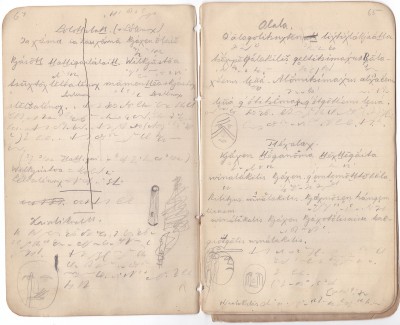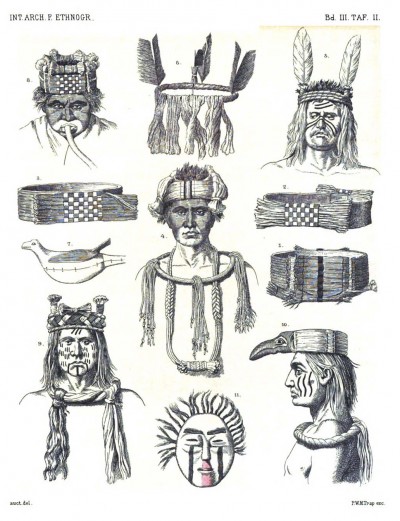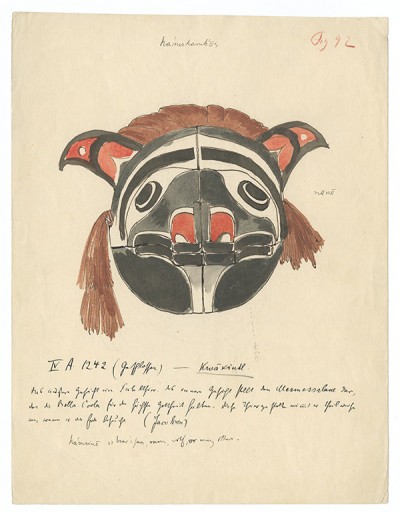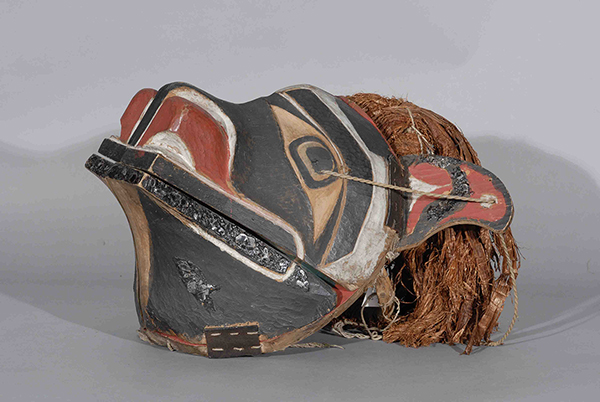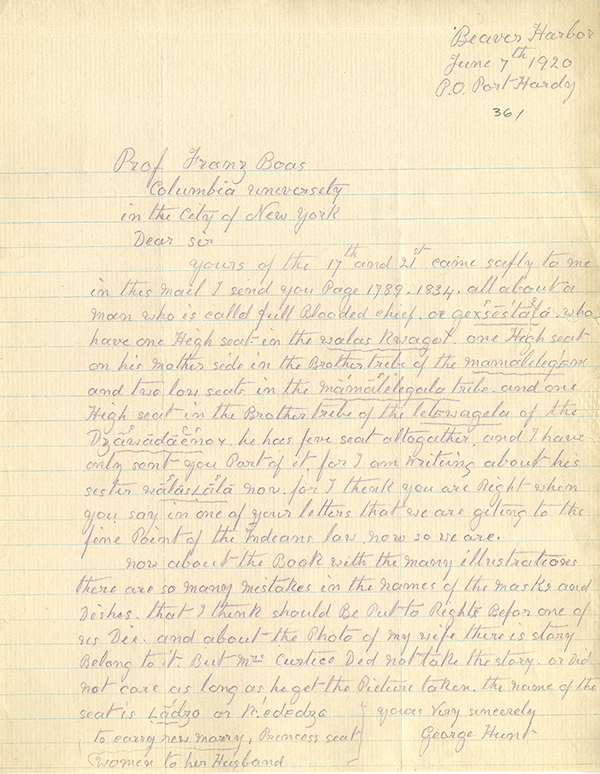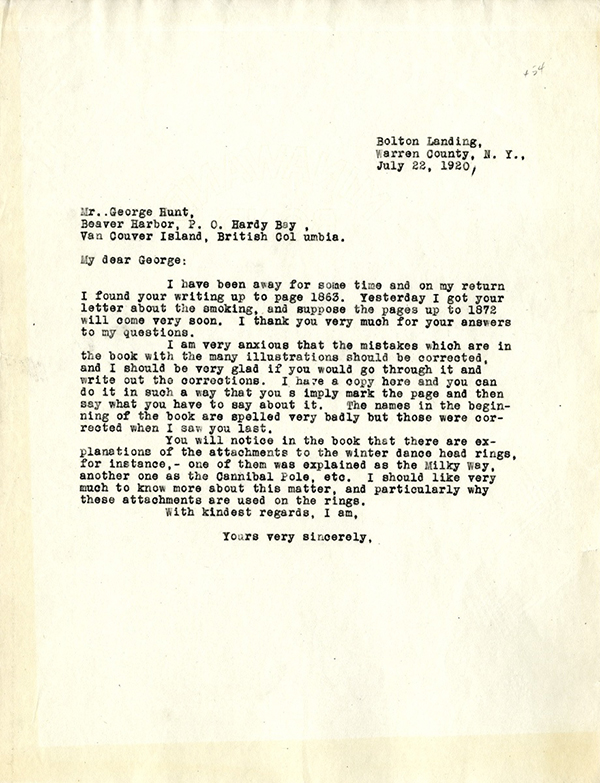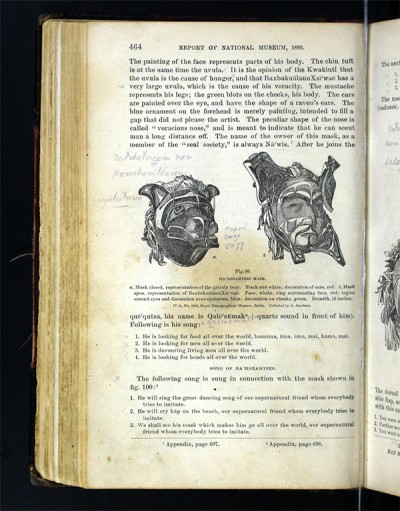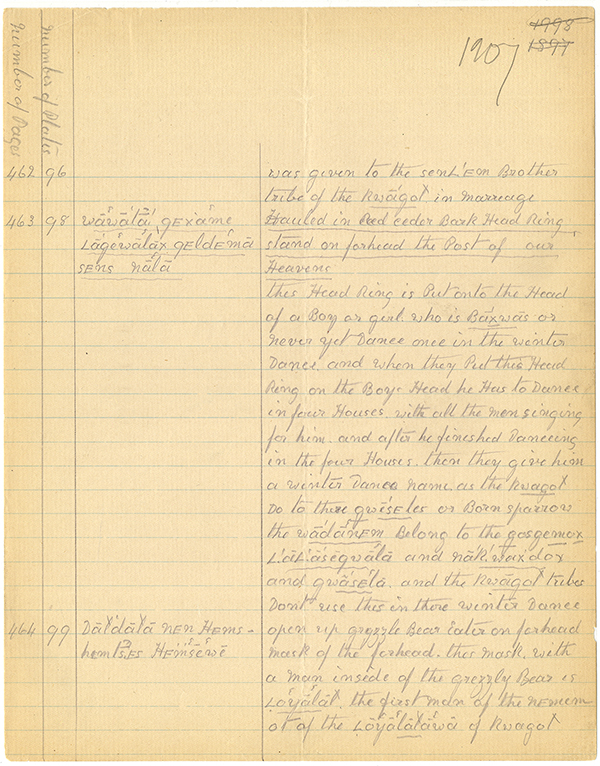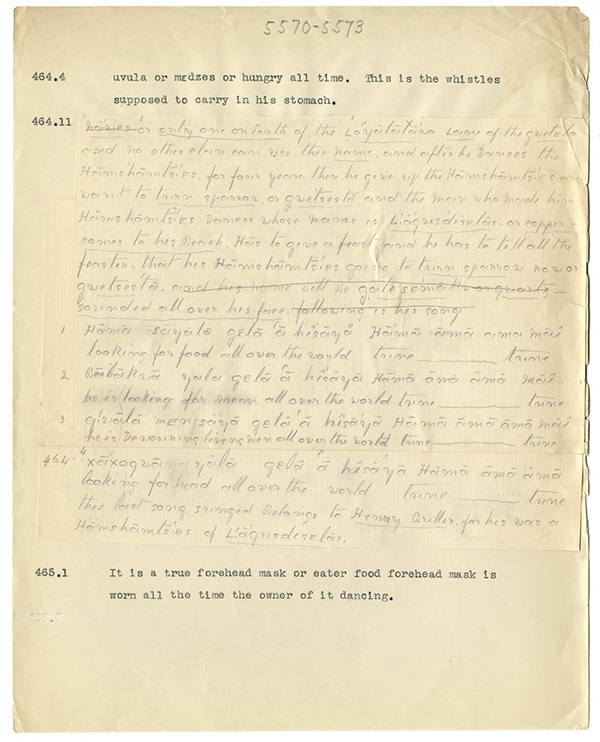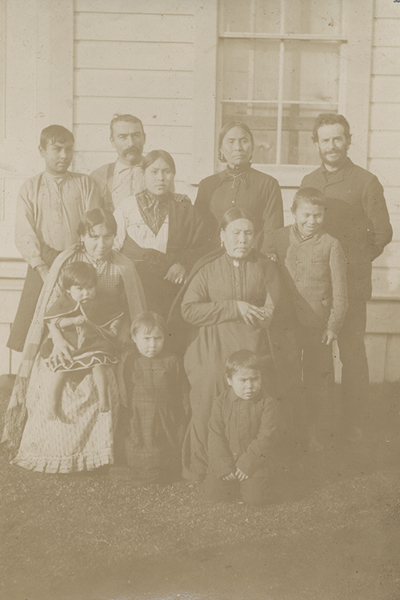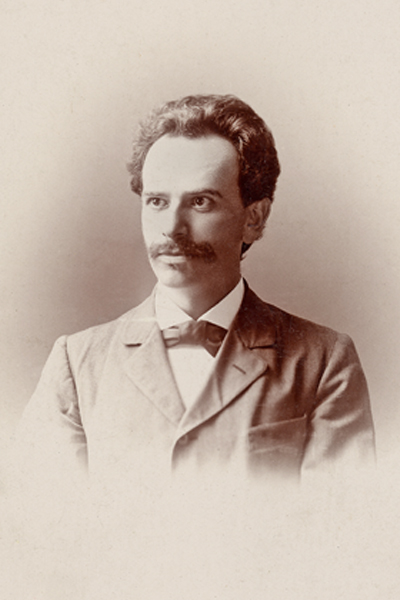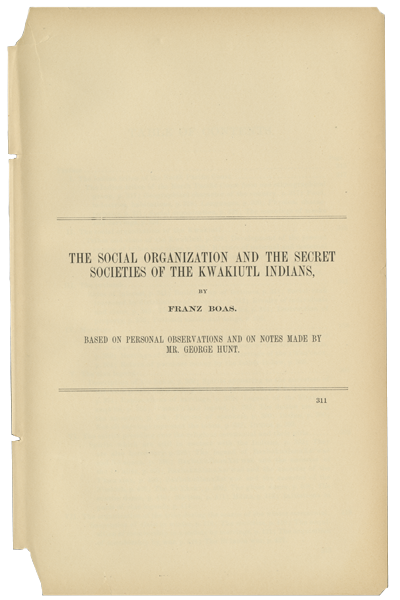CHAPTER I: FRANZ BOAS AND GEORGE HUNT
Making and Remaking the 1897 Book
The 1897 volume was a key component in the decades-long relationship between Franz Boas and George Hunt. Having worked together to produce the book, the two men spent the rest of their lives returning to it during their ethnographic research with the Kwakwaka’wakw.
1886
Franz Boas first conducted fieldwork in British Columbia by visiting Victoria and the Kwakwaka’wakw villages of ’Yalis (Alert Bay) and Xwamdasbe’ (Newitti, on Hope Island), where he purchased material for Berlin’s Royal Ethnographical Museum. He made drawings and recorded observations, stories, vocabulary, and notes in a highly idiosyncratic shorthand. On the pages here, Boas describes the regalia and face-painting designs for a number of dances, and these provided the basis for his earliest essays on regional art. Over his initial decade of research in BC, Boas published scores of articles from which he compiled the 1897 book.
1887-1894
Boas repeatedly commissioned ethnologists at the Berlin museum to make watercolor paintings of its Kwakwaka’wakw masks, most of which had been collected by Johan Adrian Jacobsen (with George Hunt’s help) in the early 1880s. At both Chicago in 1893 and Fort Rupert in 1894, Boas and Hunt used these paintings to solicit identifications, song lyrics, and information on ownership. Boas then drew on the field notes to write figure captions in the 1897 book, as for this distinctive transformation mask used in the Hamshamtses Dance.
Kwakwaka’wakw Transformation Mask (closed and open) with notes by Franz Boas, ca. 1887–94
Attributed to Albert Grünwedel, German (1856–1953)
Paper, ink, paint (watercolor)
American Museum of Natural History, Z/43 H and I
Kwakwaka’wakw Transformation Mask pictured in Boas’s research paintings. Wood, cedar bark, leather, cord. Courtesy of U’mista Cultural Centre and bpk Bildagentur / Ethnologisches Museum Berlin, Staatliche Museen, Berlin / Art Resource, NY.
1897-1920
The 1897 book immediately made its way to scholars and museums around the world. Boas sent it to Hunt to show to Kwagu’l chiefs in Fort Rupert when reading Boas’s 1897 letter promoting the value of the book as a historical record (excerpted on the landing page of this site). In 1900, after Hunt was arrested for potlatching, Boas mailed a copy of the book to a colleague in Victoria, BC, to be entered in court as evidence that Hunt was there as an “ethnographer” and not a “participant”; Hunt was acquitted. Over decades of work together, the two men constantly referred back to the book when collecting additional objects, stories, and songs.
1920-1933
In June 1920, Hunt suggested that they should correct the book’s figure captions, and Boas encouraged him to do so. Hunt began by adding marginal annotations to his own copy. A couple of years later, he produced a manuscript with new object identifications, descriptions, and information on histories of ownership. Hunt then systematically revised the entire book; by the time of his death in 1933, he had sent Boas more than 600 pages of corrections and emendations. This exhibit and the larger 1897 Critical Edition project are bringing Hunt’s archival notes back into connection with the book, museum collections, and Kwakwaka’wakw families for the first time.
The Social Organization and the Secret Societies of the Kwakiutl Indians, 1897 (first edition)
Franz Boas, American, born Germany (1858–1942)
Formerly owned by George Hunt
Private Collection
George Hunt annotated the text in this personal copy of Boas’s 1897 book. Hunt’s notes on the transformation mask in figure 99 read:
Dałdałag̱ᴇm nᴇn
Hᴇmshᴇmts!ᴇsewe
ʟ̣oyalaława
coped Page 5077
Manuscript by George Hunt correcting book captions, early 1920s
Franz Boas Papers, American Philosophical Society Library
Hunt’s notes on figure 99 read:
Dāł´dāłā nᴇn Hᴇmshᴇmts!ᴇs Hᴇmᵋsēᵋwē
open up gryzzle Bear Eater on forhead
mask of the forhead. this mask with
a man inside of the grezzly Bear is
ʟ̣oᵋyāᵋlāł, the first man of the nᴇmem-
ot of the ʟ̣ōᵋyāᵋlāłāᵋwā of kwagoł
Notes by George Hunt, 1930s
Franz Boas Papers, American Philosophical Society Library
Hunt’s notes on figure 99 read:
this mask cover the face and when the Dancer is ready to come in the mask comes inside of the Door about two steps in… and he wiggles about as though he try to shake off his [mask]… while [they] Beat fast time without singing for about one minute … nawes only one on earth. this name Belong to the Loyalalawa clan. this name is Hereditary no other clan can use it … the Hamshamts!Es of that clan always called nawes…. and the man who made him Hamshamts!Es Dancer is LagusdesElas or copper comes to his Beach

